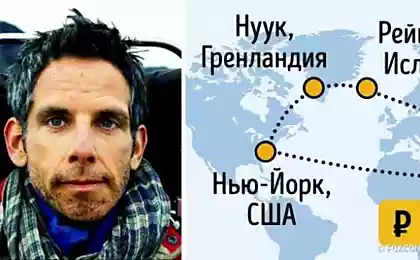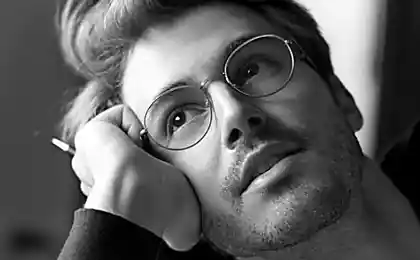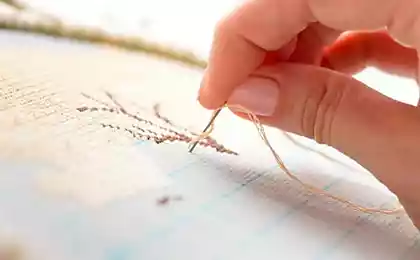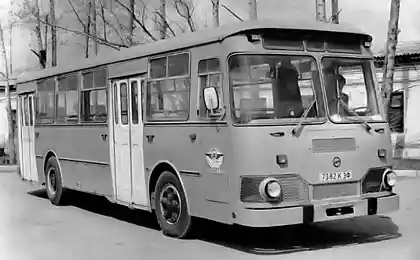520
What is the good life?
Book Vladimir Antenna "Simple questions" is a collection of children's "why" about seemingly basic things that it is difficult to explain even to adults. Published academic answers to three vital questions: why confusing thread, why jostle in the bus and what a good life is.
Vladimir Anton, doctor of physico-mathematical Sciences, candidate of biological Sciences, Professor of the Department of technology transfer NNGU im. N. And. Lobachevsky, Professor, Department of management of innovative projects of the Academy of national economy under the RF government (Moscow).

Why do threads get confused? Everyone knows that threads often get confused, and completely hopeless! Entangled fishing line, chains, cords, hoses, anything. Why is this happening? The exact answer to this question is found literally 40 years ago. It all started with trying to calculate the motion of polymer molecules.
And here proved to be very successful ideas of academician Ilya Livshits. It turns out that the flexibility of the individual parts of polymer filaments do practically independent movements. These movements have a lot in common with the chaotic movement of free particles in the gas, although there is a difference. And here, under certain circumstances, namely in a good solvent, the polymer thread turns into a ball.
These ideas we will use and to look, how to behave in our thread. Take her like you're about to put the needle. We will see that due to the elasticity, because it sticks out just short of the tip, the angle at one end and a corner at the other end of piece of thread tightly linked to each other. Actually, therefore, it is possible to see in the eye of a needle. Take a little and extend a piece of string held between his fingers. You see, what happened?
Sagging. Corners began to be freed from mutual dependence. Finally, there is such length in which the corners are not connected. It is very important physical characteristic of the filament. This length is called persistent, that is, one in which one angle is no longer dependent on the other.
This means that fragments of a single thread can take a random situation, including possible self-intersections of the thread. On the plane it does not lead to anything: I will pull — it will unravel. But if the motion occurs in three-dimensional space, while wandering in the end formed a knot.
Natural! Just enough to wait a little while and it will happen. Thus, if the thread lies in three-dimensional space if it has ultimate flexibility and it starts to bend randomly from different influences, will happen self-intersection, the tip enters the loop, and when you for the tip to pull, it gets all messed up.
What is striking is that this type of thread a lot (the shoelaces and the line does not count) — many important high molecular weight polymeric substances which are threads. And with them, all these processes also occur. Fortunately, these polymers, like DNA, in which the encrypted genetic information about the construction of a living organism, free from obfuscation. The DNA double helix, luckily, hard, and so it can not happen. Thus, the thread is entangled according to the law of nature. If the thread is flexible, sufficiently long, if it is in three-dimensional space, the random motion of the fragments with 100% guarantee will lead to the fact that there are self-intersections and still confused.
Why jostle in the bus? The answer suggests itself: because closely. This is true, but not all. Why are these jerks, though unpleasant, but not hurt us? And do we not especially worry, if crowded need to pique someone.
Questions of this type more recently, from everyday moved into the category of science. Science called synergetics, began to study collective behavior of large ensembles of such particles, which varies not only from external influences but also because of their own internal activity. These particles are active. To them, in particular the nerve cells. In some cases, so you can consider the person and the team.
For example, in the journal "Automation and remote control" published research "passengers Filling space in public transport". It simulated "motor behavior of passengers in urban public transport — in the bus or trolleybus, tram car, subway or train... during embarkation, travel and disembarkation".
The result of this simulation "could be a prediction of the degree of filling of the compartment or wagon, the assessment of comfort level, recommendations concerning the configuration of the interior". The work is hard. Let's try to understand in our example themselves. We will see that all the matter in the view of about the size of his personal space, which should not imbibe.
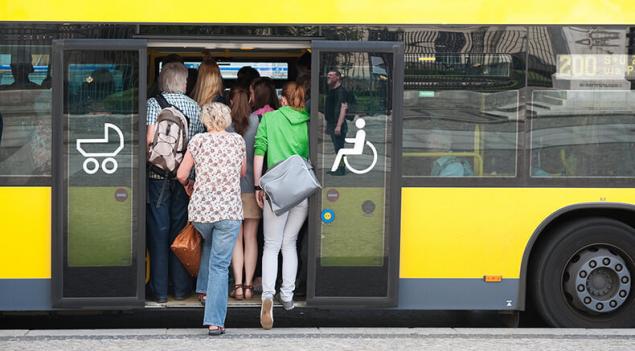
Here in an empty bus is the first passenger. If he does not have claustrophobia (fear of narrowness), or other reasons, he will sit at the window. If the second passenger is unfamiliar with first, it will sit at the window, but the other one. If he sits next to the first passenger, that is, violate his personal space, it is likely to be regarded as a challenge. If the first passenger sits his friend, it will look quite natural. Conversely, if his friend does not sit close, it will be seen as a challenge.
When the free space will end, no one will pay attention to who sat where. Then start filling in the areas and passage. First, people will stay at a distance, and as you fill to get close, touch and even push if you need to move around the cabin, let alone if it is necessary Bitsa through the door. And nobody will be offended, because the growth of the concentration of people in the cabin changes the assessment of the size of their individual spaces, which should not interfere with outsiders. The fact of such an invasion, or lack of it causes a reaction.
What is the good life? Of course each person has their own idea of the good, happy life. But is it possible to find some objective criteria and approaches to deciding what is a good life? It turns out that you can. There are many approaches to the assessment of quality of life. For example, the United Nations to assess the quality of life uses the integrated indicator called human development index (before 2013 — the index of human development). It was developed in 1990 by a group of economists, which was chaired by the Pakistani Mahbub ul Haq, and since 1993, used the UN in the annual report on human development. This index consists of three components.
The first of them is life expectancy. Is an integral indicator, which, of course, characterizes human health, without which it is impossible to be happy and it's hard to believe life is good. And of course, itself a long life is a blessing, because we can have time to do something and to achieve something. For example, in China longevity is considered a blessing. They say it's not just anyone gets.
The second component of the indicator characterizes the level of education, as well as its availability in a country or region. Actually most people associate the good life with education. And the third component is quality of life, assessed using the ratio of the gross domestic product per capita and purchasing power.
In 2010 the method of evaluation of human development has been revised. For comparison of countries by level of human development, we added three additional indexes, which take into account socio-economic inequality, gender inequality and multidimensional poverty, understood as the availability of various vital resources and benefits.
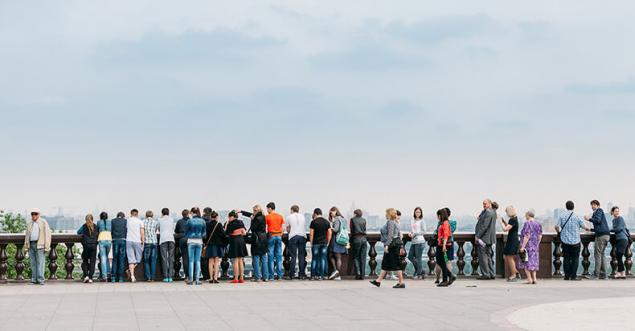
According to the human development index in Russia in recent years is at the end of the fifties of the list. According to released 2014 UN report for 2013, Russia ranks 57th out of 187. Inside Russia, according to 2011 data, in the first place, the Tyumen region, then in Moscow, St. Petersburg and Tatarstan. If indexes are so great all over Russia, it could claim a place in the top ten countries.
While the magnitude of the human development index, first in the world consistently ranked Norway. Confused only that in this country high level of suicide. Besides, some time ago the Norwegian men said about the significant difficulties experienced in life, and started a national debate about how to alleviate their situation.
Special studies show that people feel happy when the country has a high average income, low unemployment rate, considerable economic freedom and a relatively open labour market. At the same time generous payments of social benefits, low level of inequality of happiness do not contribute.
In the definition given by the world health organization, assessment of human quality of life is determined by the difference between his expectations and pretensions and how he really lives. Note that this difference depends not only on how to really live people, but also what are his expectations. Controlling them can be controlled and quality of life. For example, Robinson Crusoe his father taught that the happiest life is reasonable. Not poor and not rich, and that is reasonable, allowing a person to control himself.
Why do we need energy and where to get it
How prayer changes the blood
Returning to where it began, we can say that everyone has their own idea of the good life. But we must take into account the opinion of people who say they have good life still, there are objective characteristics that gives the guidelines. However, if we want to be happy, you should be able to appreciate what we have. published
Author: Vladimir Antonets
P. S. And remember, just changing your mind — together we change the world! ©
Source: theoryandpractice.ru/posts/14295-prostye-voprosy
Vladimir Anton, doctor of physico-mathematical Sciences, candidate of biological Sciences, Professor of the Department of technology transfer NNGU im. N. And. Lobachevsky, Professor, Department of management of innovative projects of the Academy of national economy under the RF government (Moscow).

Why do threads get confused? Everyone knows that threads often get confused, and completely hopeless! Entangled fishing line, chains, cords, hoses, anything. Why is this happening? The exact answer to this question is found literally 40 years ago. It all started with trying to calculate the motion of polymer molecules.
And here proved to be very successful ideas of academician Ilya Livshits. It turns out that the flexibility of the individual parts of polymer filaments do practically independent movements. These movements have a lot in common with the chaotic movement of free particles in the gas, although there is a difference. And here, under certain circumstances, namely in a good solvent, the polymer thread turns into a ball.
These ideas we will use and to look, how to behave in our thread. Take her like you're about to put the needle. We will see that due to the elasticity, because it sticks out just short of the tip, the angle at one end and a corner at the other end of piece of thread tightly linked to each other. Actually, therefore, it is possible to see in the eye of a needle. Take a little and extend a piece of string held between his fingers. You see, what happened?
Sagging. Corners began to be freed from mutual dependence. Finally, there is such length in which the corners are not connected. It is very important physical characteristic of the filament. This length is called persistent, that is, one in which one angle is no longer dependent on the other.
This means that fragments of a single thread can take a random situation, including possible self-intersections of the thread. On the plane it does not lead to anything: I will pull — it will unravel. But if the motion occurs in three-dimensional space, while wandering in the end formed a knot.
Natural! Just enough to wait a little while and it will happen. Thus, if the thread lies in three-dimensional space if it has ultimate flexibility and it starts to bend randomly from different influences, will happen self-intersection, the tip enters the loop, and when you for the tip to pull, it gets all messed up.
What is striking is that this type of thread a lot (the shoelaces and the line does not count) — many important high molecular weight polymeric substances which are threads. And with them, all these processes also occur. Fortunately, these polymers, like DNA, in which the encrypted genetic information about the construction of a living organism, free from obfuscation. The DNA double helix, luckily, hard, and so it can not happen. Thus, the thread is entangled according to the law of nature. If the thread is flexible, sufficiently long, if it is in three-dimensional space, the random motion of the fragments with 100% guarantee will lead to the fact that there are self-intersections and still confused.
Why jostle in the bus? The answer suggests itself: because closely. This is true, but not all. Why are these jerks, though unpleasant, but not hurt us? And do we not especially worry, if crowded need to pique someone.
Questions of this type more recently, from everyday moved into the category of science. Science called synergetics, began to study collective behavior of large ensembles of such particles, which varies not only from external influences but also because of their own internal activity. These particles are active. To them, in particular the nerve cells. In some cases, so you can consider the person and the team.
For example, in the journal "Automation and remote control" published research "passengers Filling space in public transport". It simulated "motor behavior of passengers in urban public transport — in the bus or trolleybus, tram car, subway or train... during embarkation, travel and disembarkation".
The result of this simulation "could be a prediction of the degree of filling of the compartment or wagon, the assessment of comfort level, recommendations concerning the configuration of the interior". The work is hard. Let's try to understand in our example themselves. We will see that all the matter in the view of about the size of his personal space, which should not imbibe.

Here in an empty bus is the first passenger. If he does not have claustrophobia (fear of narrowness), or other reasons, he will sit at the window. If the second passenger is unfamiliar with first, it will sit at the window, but the other one. If he sits next to the first passenger, that is, violate his personal space, it is likely to be regarded as a challenge. If the first passenger sits his friend, it will look quite natural. Conversely, if his friend does not sit close, it will be seen as a challenge.
When the free space will end, no one will pay attention to who sat where. Then start filling in the areas and passage. First, people will stay at a distance, and as you fill to get close, touch and even push if you need to move around the cabin, let alone if it is necessary Bitsa through the door. And nobody will be offended, because the growth of the concentration of people in the cabin changes the assessment of the size of their individual spaces, which should not interfere with outsiders. The fact of such an invasion, or lack of it causes a reaction.
What is the good life? Of course each person has their own idea of the good, happy life. But is it possible to find some objective criteria and approaches to deciding what is a good life? It turns out that you can. There are many approaches to the assessment of quality of life. For example, the United Nations to assess the quality of life uses the integrated indicator called human development index (before 2013 — the index of human development). It was developed in 1990 by a group of economists, which was chaired by the Pakistani Mahbub ul Haq, and since 1993, used the UN in the annual report on human development. This index consists of three components.
The first of them is life expectancy. Is an integral indicator, which, of course, characterizes human health, without which it is impossible to be happy and it's hard to believe life is good. And of course, itself a long life is a blessing, because we can have time to do something and to achieve something. For example, in China longevity is considered a blessing. They say it's not just anyone gets.
The second component of the indicator characterizes the level of education, as well as its availability in a country or region. Actually most people associate the good life with education. And the third component is quality of life, assessed using the ratio of the gross domestic product per capita and purchasing power.
In 2010 the method of evaluation of human development has been revised. For comparison of countries by level of human development, we added three additional indexes, which take into account socio-economic inequality, gender inequality and multidimensional poverty, understood as the availability of various vital resources and benefits.

According to the human development index in Russia in recent years is at the end of the fifties of the list. According to released 2014 UN report for 2013, Russia ranks 57th out of 187. Inside Russia, according to 2011 data, in the first place, the Tyumen region, then in Moscow, St. Petersburg and Tatarstan. If indexes are so great all over Russia, it could claim a place in the top ten countries.
While the magnitude of the human development index, first in the world consistently ranked Norway. Confused only that in this country high level of suicide. Besides, some time ago the Norwegian men said about the significant difficulties experienced in life, and started a national debate about how to alleviate their situation.
Special studies show that people feel happy when the country has a high average income, low unemployment rate, considerable economic freedom and a relatively open labour market. At the same time generous payments of social benefits, low level of inequality of happiness do not contribute.
In the definition given by the world health organization, assessment of human quality of life is determined by the difference between his expectations and pretensions and how he really lives. Note that this difference depends not only on how to really live people, but also what are his expectations. Controlling them can be controlled and quality of life. For example, Robinson Crusoe his father taught that the happiest life is reasonable. Not poor and not rich, and that is reasonable, allowing a person to control himself.
Why do we need energy and where to get it
How prayer changes the blood
Returning to where it began, we can say that everyone has their own idea of the good life. But we must take into account the opinion of people who say they have good life still, there are objective characteristics that gives the guidelines. However, if we want to be happy, you should be able to appreciate what we have. published
Author: Vladimir Antonets
P. S. And remember, just changing your mind — together we change the world! ©
Source: theoryandpractice.ru/posts/14295-prostye-voprosy
Doohan iTank: three-wheeled electric scooter with the character of the crossover
9 signs that you are a successful person

